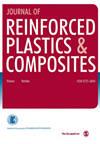无抗剪加固 BFRP/ 钢混合 RC 梁抗剪行为的实验和数值研究
IF 2.2
3区 材料科学
Q3 MATERIALS SCIENCE, COMPOSITES
引用次数: 0
摘要
钢筋和纤维增强聚合物(FRP)钢筋的混合加固可为混凝土结构提供强度、延展性和耐久性之间的平衡性能。因此,本研究评估了无剪力配筋的混合玄武岩-FRP/钢-RC 梁的抗剪性能。共浇注了 12 根 RC 梁,并在四点荷载下进行了测试,以研究钢筋类型、纵向钢筋的配筋率以及 FRP 与钢筋比之间的轴向刚度[公式:见正文]对混凝土梁抗剪性能的影响。试验结果从裂缝形态、荷载-中跨挠度、荷载-裂缝宽度关系以及试验梁的抗剪强度等方面进行了分析。此外,还将试验结果与从各种设计规范和指南中获得的理论结果进行了比较。此外,还创建了一个有限元(FE)模型,并将实验结果用于验证 FE 模型。试验结果表明,使用类似有效配筋率设计的梁试件具有相当的抗剪强度,尽管使用了拉伸配筋。试验结果表明,与钢筋相比,使用混合钢筋可将梁的抗剪能力提高 11%。此外,与 FRP-RC 梁相比,混合-RC 梁的能量吸收能力提高了 16%。将[计算公式:见正文]比率从 1.25 提高到 2.44,剪切强度和能量吸收都提高了约 10%。值得注意的是,与 FRP-RC 梁相比,混合材料-RC 梁的挠度和裂缝宽度都有显著下降。设计规范 ACI440.11-22 和 CSA S806-12 对剪切强度的估算足够准确,而 JSCE-1997 则显示出保守的结果。本文章由计算机程序翻译,如有差异,请以英文原文为准。
Experimental and numerical study on the shear behavior of hybrid BFRP/steel RC beams without shear reinforcement
Hybrid reinforcement of steel and fiber-reinforced polymer (FRP) bars can provide a balanced performance between strength, ductility, and durability for the concrete structures. Thus, this study evaluates the shear performance of hybrid Basalt-FRP/steel-RC beams without shear reinforcement. A total of twelve RC beams were cast and tested under four-point loading to study the influence of reinforcement type, reinforcement ratio of longitudinal bars and axial stiffness between FRP and steel ratio, [Formula: see text] on the shear performance of the concrete beams. The test results were analyzed in terms of crack patterns, load-midspan deflection, load-crack width relationships, and shear strength of the tested beams. In addition, the experimental results were compared with the theoretical results obtained from various design codes and guidelines. Moreover, a finite element (FE) model was created, and the experimental results were used for validation of the FE model. The test results revealed that the beam specimens designed with similar effective reinforcement ratio exhibits comparable shear strength nevertheless the tensile reinforcement used. Experimental test results demonstrated that using hybrid bars increased the shear capacity of the beams by 11% compared to steel bars. Furthermore, the energy absorption of the hybrid-RC beams was enhanced by 16% compared to FRP-RC beams. By elevating the [Formula: see text] ratio from 1.25 to 2.44, both the shear strength and energy absorption improved by approximately 10%. Notably, there was a significant decrease in the deflection and crack width of the hybrid-RC beams in comparison to the FRP-RC beams. The design codes ACI440.11-22 and CSA S806-12 displayed accurate enough estimates of the shear strength, while JSCE-1997 showed a conservative result.
求助全文
通过发布文献求助,成功后即可免费获取论文全文。
去求助
来源期刊

Journal of Reinforced Plastics and Composites
工程技术-材料科学:复合
CiteScore
5.40
自引率
6.50%
发文量
82
审稿时长
1.3 months
期刊介绍:
The Journal of Reinforced Plastics and Composites is a fully peer-reviewed international journal that publishes original research and review articles on a broad range of today''s reinforced plastics and composites including areas in:
Constituent materials: matrix materials, reinforcements and coatings.
Properties and performance: The results of testing, predictive models, and in-service evaluation of a wide range of materials are published, providing the reader with extensive properties data for reference.
Analysis and design: Frequency reports on these subjects inform the reader of analytical techniques, design processes and the many design options available in materials composition.
Processing and fabrication: There is increased interest among materials engineers in cost-effective processing.
Applications: Reports on new materials R&D are often related to the service requirements of specific application areas, such as automotive, marine, construction and aviation.
Reports on special topics are regularly included such as recycling, environmental effects, novel materials, computer-aided design, predictive modelling, and "smart" composite materials.
"The articles in the Journal of Reinforced Plastics and Products are must reading for engineers in industry and for researchers working on leading edge problems" Professor Emeritus Stephen W Tsai National Sun Yat-sen University, Taiwan
This journal is a member of the Committee on Publication Ethics (COPE).
 求助内容:
求助内容: 应助结果提醒方式:
应助结果提醒方式:


